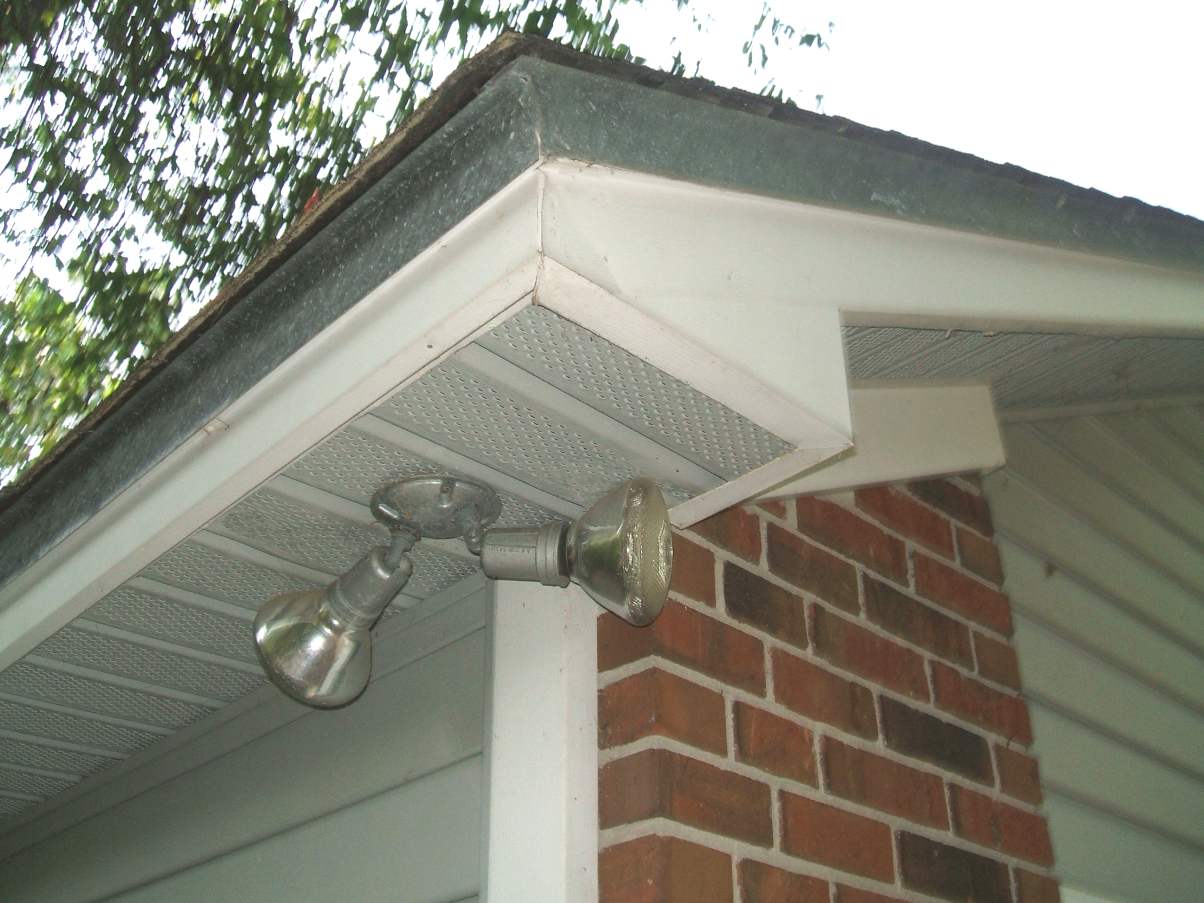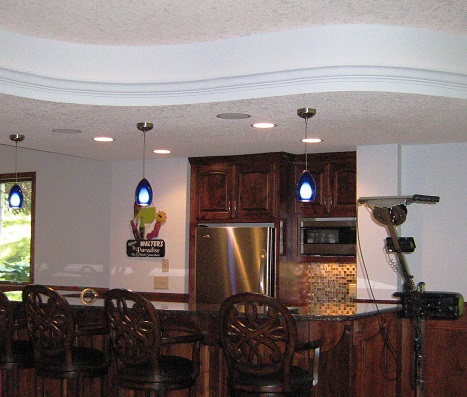Soffit
In its broadest sense, the term ‘soffit’ can be used to refer to the underside of any construction element, such as an arch, architrave, or projecting cornice. However, most commonly it refers to the underside of the eaves, that is, the underside of the part of the roof that projects beyond the external wall of a building.
Typically soffit boards will be fixed to the underside of projecting rafters to form the soffit, whilst fascia boards are fixed along the vertical faces of the rafters forming a fascia. In combination, these elements help to ‘seal’ the roof at its edges. However, they may include small openings to allow ventilation of the roof void, helping prevent the accumulation of moisture which could result in condensation and cause the roof to decay.
Soffits are traditionally constructed from timber, however, a wide range of other materials may also be used, including metal cladding, UPVC, vinyl and composite materials.
Inside buildings, the term soffit may refer to any portion of a ceiling that is lower than the rest of the ceiling. This can be used as an accent in rooms for decorative reasons, or in rooms with high ceilings to make the room feel smaller. They can also be required to conceal structural beams, plumbing elements, heating/cooling ducts or light fixtures.
In classical architecture, the soffit can be decorated with ‘tooth-like’ blocks used in a close repeating pattern, known as ‘dentils’. In the Doric order, rectangular blocks were commonly hung from the soffit of the cornice over the triglyphs, known as ‘mutules’.
[edit] Related articles on Designing Buildings Wiki
- Arches.
- Architrave.
- Barrel vault.
- Bas-relief.
- Classical orders in architecture.
- Corbel.
- Cornice.
- Cornice coving and architrave definitions.
- Definition of ceiling.
- Elements of classical columns.
- Entablature.
- Fascia.
- Fillet.
- Frieze.
- Integrated service module.
- Moulding.
- Pedestal.
- Pediment.
- Pilaster.
- Types of ceiling.
Featured articles and news
Government consultations for the summer of 2025
A year of Labour, past and present consultations on the environment, the built environment, training and tax.
CMA competitiveness probe of major housing developers
100 million affordable housing contributions committed with further consultation published.
Homes England supports Greencore Homes
42 new build affordable sustainable homes in Oxfordshire.
Zero carbon social housing: unlocking brownfield potential
Seven ZEDpod strategies for brownfield housing success.
CIOB report; a blueprint for SDGs and the built environment
Pairing the Sustainable Development Goals with projects.
Types, tests, standards and fires relating to external cladding
Brief descriptions with an extensive list of fires for review.
Latest Build UK Building Safety Regime explainer published
Key elements in one short, now updated document.
UKGBC launch the UK Climate Resilience Roadmap
First guidance of its kind on direct climate impacts for the built environment and how it can adapt.
CLC Health, Safety and Wellbeing Strategy 2025
Launched by the Minister for Industry to look at fatalities on site, improving mental health and other issues.
One of the most impressive Victorian architects. Book review.
Common Assessment Standard now with building safety
New CAS update now includes mandatory building safety questions.
RTPI leader to become new CIOB Chief Executive Officer
Dr Victoria Hills MRTPI, FICE to take over after Caroline Gumble’s departure.
Social and affordable housing, a long term plan for delivery
The “Delivering a Decade of Renewal for Social and Affordable Housing” strategy sets out future path.
A change to adoptive architecture
Effects of global weather warming on architectural detailing, material choice and human interaction.
The proposed publicly owned and backed subsidiary of Homes England, to facilitate new homes.
How big is the problem and what can we do to mitigate the effects?
Overheating guidance and tools for building designers
A number of cool guides to help with the heat.
The UK's Modern Industrial Strategy: A 10 year plan
Previous consultation criticism, current key elements and general support with some persisting reservations.
Building Safety Regulator reforms
New roles, new staff and a new fast track service pave the way for a single construction regulator.


























